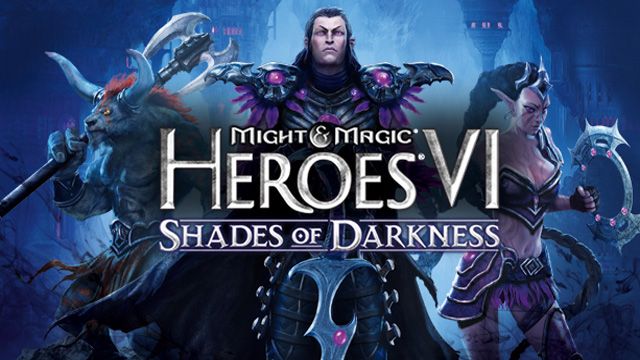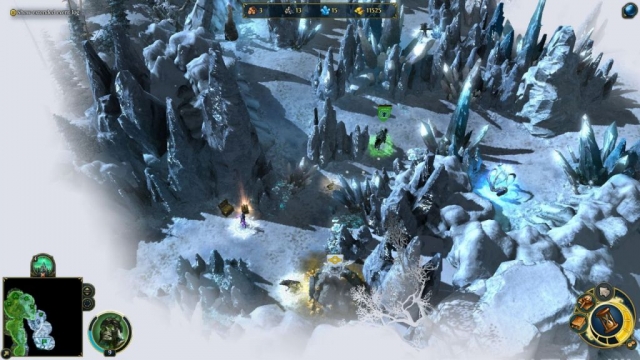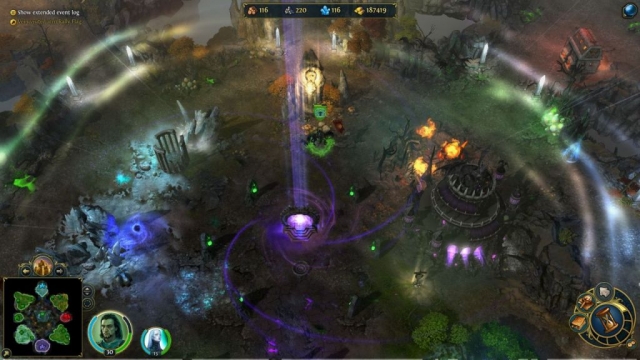Might & Magic Heroes VI: Shades of Darkness Review

The Might & Magic Heroes franchise is turning into a jumble — and not just with how the name has been rearranged. When Ubisoft released Heroes VI in 2011, the developer was Black Hole Entertainment. When two adventure packs were added in 2012, the developer was Limbic Entertainment. And now with Shades of Darkness, the first full expansion pack for the game, the developer is Virtuos. I’m not sure if this is an issue with “too many cooks” or if Ubisoft is simply taking the lowest bid for each project, but after marginally favorable reviews for Heroes VI, the franchise has been sliding downhill ever since.
What’s New
Shades of Darkness comes with three main additions: a new Dungeon faction plus new campaigns for the Dungeon and Necropolis factions (which is a little odd since Necropolis was also featured in one of the adventure packs, but never mind). The Dungeon faction is interesting. It focuses on dark elves, and it includes assassins who can hide and backstab, chakram dancers who can hit multiple targets with their looping throws, big and bulky minotaurs, flying manticores, magic-immune black dragons, and more. The racial ability of the Dungeon faction allows any of their creatures to hide just like the assassins, which means they can attack for bonus damage and avoid retaliation, and it’s a good ability because it means you have to adjust your strategy when you face them (by, for example, using area-effect spells to hit creatures you can’t see). There’s nothing worse than having a big stack of minotaurs disappear and then wipe out one of your fragile back row stacks. But otherwise, the Dungeon faction is about the same as every other faction, with a similar mix of unit types.
The two campaigns in Shades of Darkness have pluses and minuses. On the plus side they’re generally well-written and well-acted (and luckily the main exception to the latter disappears for a long stretch of the Necropolis campaign), and they’re much smaller than the original campaigns, which means there’s less repetition. But on the minus side, for some reason Virtuos decided to move away from the traditional Heroes gameplay mechanic, with your hero competing against enemy heroes, and instead tried to make the game more like King’s Bounty, with your hero mostly only having to deal with fixed stacks of neutral creatures. I enjoy the King’s Bounty games, but a similar mechanic doesn’t work well in Heroes VI because after your hero gets to the level 10-15 range, only battles against bosses and enemy heroes pose much of challenge, and neutral stacks don’t have any chance at all. During the final Necropolis map, I quick-played about 90% of the battles and took no losses, even though I was playing a magic hero and had magic turned off. Easy battle after easy battle isn’t especially fun or rewarding, and it turns about half of the maps into boring slogs.
Shades of Darkness also comes with some smaller additions. There are new buildings (including the memory mentor, which allows you to respect your hero, and the training center, which allows you to upgrade your creatures), new equipment (including sets and dynasty weapons), new creatures (including the hiding black panther), and new dynasty traits and achievements. In all, Shades of Darkness has the right quantity of additions you’d want to see in an expansion pack; it’s just the quality that’s lacking.
What’s Improved
For the most part, Virtuos left the Heroes VI engine intact. I went back and played a couple of the original campaigns, and I noticed that at some point between when I first played them and now, a lot of the bugs have been fixed. The special attack of imperial griffins now works (not that the AI ever uses it), the major bug in the Haven campaign isn’t there any longer, you can purchase and use all five dynasty traits for your hero, and more. I don’t know if Virtuos fixed these bugs for Shades of Darkness, or if one of the other developers did it during the last two years, but it was nice to see.
Unfortunately, Shades of Darkness comes with some new bugs of its own. For some reason the game doesn’t work well with NVIDIA graphics cards, and you might get a lot of black screen lockups (I use NVIDIA but I only had a few lockups). And a bunch of the dynasty weapons are broken. If you use a magic staff that’s supposed to reduce mana costs, then what it’ll really do is increase the costs each time you load your game. I used such a weapon during the Necropolis campaign, but I thought the higher costs were part of the storyline (since the Necropolis faction suffers from a plague during the first couple of maps). By the time I figured out that the problem was really a bug, and that there wasn’t any way to correct it, my hero was hosed, and I had to start over. A good way to lose points with reviewers (and players in general) is to waste several hours of their time.
Conclusion
Thanks to repeating two maps, I spent somewhere around 40 hours playing Shades of Darkness. I didn’t hate that time — learning how to manage the Dungeon faction is worthwhile, and building up a hero is still fun — but I didn’t exactly enjoy it, either, and I was happy when I finished the two new campaigns so I could put the game away and move on to something else. At $30, Shades of Darkness seems dramatically overpriced. I’d recommend that you wait until the price drops down to about half of that amount (which will probably happen sooner rather than later) and for a patch or two to come out.
Reviewed By: Steven Carter
Publisher: Ubisoft
Rating: 67%
——————————————————————————–
This review is based on a digital copy of Might & Magic Heroes VI: Shades of Darkness for the PC provided by Ubisoft.
 Game Over Online
Game Over Online










